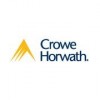Filter interviews by
Befree Business Resourceing Interview Questions, Process, and Tips
Befree Business Resourceing Interview Experiences
45 interviews found
I applied via Campus Placement
(8 Questions)
- Q1. Whats is accounting methods
- Ans.
Accounting methods refer to the rules and procedures used by companies to prepare financial statements.
Accounting methods determine how revenue and expenses are recognized in financial statements.
There are two main accounting methods: cash basis and accrual basis.
Cash basis accounting records revenue and expenses when cash is actually received or paid.
Accrual basis accounting records revenue when it is earned and expen...
- Q2. What is capital gain
- Ans.
Capital gain is the profit that results from a sale of a capital asset, such as stocks, bonds, or real estate.
Capital gain is the difference between the purchase price and the selling price of a capital asset.
It is considered a taxable event by the IRS in the United States.
Short-term capital gains are taxed at a higher rate than long-term capital gains.
Examples of capital assets include stocks, bonds, real estate, and
- Q3. What is accrual income and accrual expense
- Ans.
Accrual income and accrual expense are recognized when they are incurred, regardless of when cash is exchanged.
Accrual income is income that has been earned but not yet received, while accrual expense is an expense that has been incurred but not yet paid.
Accrual income and expense are recorded in the financial statements in the period in which they are earned or incurred, regardless of when the cash is actually receive...
- Q4. Difference between rent agreement and lease agreement
- Ans.
Rent agreements are usually short-term, while lease agreements are long-term contracts.
Rent agreements are typically month-to-month or for a fixed term, while lease agreements are usually for a longer period, such as one year or more.
Rent agreements are more flexible and can be easily terminated with notice, while lease agreements are more binding and may have penalties for early termination.
Rent agreements are common ...
- Q5. What is depreciation and how it is treated in books of accounts
- Ans.
Depreciation is the allocation of the cost of an asset over its useful life in the books of accounts.
Depreciation is a non-cash expense that reflects the decrease in value of an asset over time.
It is treated as an operating expense on the income statement, reducing the company's net income.
Depreciation is recorded on the balance sheet to reduce the carrying amount of the asset.
There are different methods of calculating...
- Q6. Basic journal entry
- Q7. What is accounts receivables and accounts playable
- Ans.
Accounts receivables are amounts owed to a company by customers for goods or services provided, while accounts payable are amounts owed by a company to suppliers for goods or services received.
Accounts receivables represent money owed to a company by customers, typically shown as an asset on the balance sheet.
Accounts payable represent money owed by a company to suppliers or vendors, typically shown as a liability on t...
- Q8. Journal entry for investment in businesses 20,000 cash and 80,000 bank loan
- Ans.
Journal entry for investment in businesses with $20,000 cash and $80,000 bank loan.
Debit the investment account for $100,000 ($20,000 cash + $80,000 bank loan)
Credit the cash account for $20,000
Credit the bank loan account for $80,000
Interview Preparation Tips
Accounting Methods,
Basic Taxation/GST,
Accounting Golden Rule ,
And more in Journal Entry
Top Befree Business Resourceing Junior Associate Interview Questions and Answers
Junior Associate Interview Questions asked at other Companies
I applied via Naukri.com and was interviewed in Dec 2024. There was 1 interview round.
(2 Questions)
- Q1. What is tax reconciliation?
- Q2. Depreciation adjustments in balance shèet as well as in preparing income tax
Interview Preparation Tips
I applied via Naukri.com and was interviewed in Apr 2024. There was 1 interview round.
(12 Questions)
- Q1. Difference b/w Capital exp and revenue exp
- Ans.
Capital expenses are for long-term assets while revenue expenses are for day-to-day operations.
Capital expenses are for acquiring or improving long-term assets like buildings or equipment.
Revenue expenses are for day-to-day operations like salaries, rent, and utilities.
Capital expenses are usually depreciated over time while revenue expenses are fully expensed in the period incurred.
- Q2. What is bank reconciliation
- Ans.
Bank reconciliation is the process of comparing a company's records to its bank statement to ensure they match.
Bank reconciliation helps identify discrepancies between the company's records and the bank statement.
It involves comparing transactions, such as deposits and withdrawals, in the company's records to those in the bank statement.
Any differences found during the reconciliation process need to be investigated and...
- Q3. Gst journal entry
- Q4. What is Deferred revenue expenditure
- Ans.
Deferred revenue expenditure refers to expenses that are incurred in one accounting period but are recognized as assets and expensed over a period of time.
Deferred revenue expenditure is recorded as an asset on the balance sheet and gradually expensed over the period of benefit.
Examples include expenses incurred for setting up a new business, advertising costs, and research and development expenses.
It helps in matching...
- Q5. Is accounting profit and tax profit are same if not what is the key difference
- Ans.
Accounting profit and tax profit are not the same. The key difference lies in the treatment of certain expenses and income.
Accounting profit is based on the principles of accounting and includes all revenues and expenses recorded in financial statements.
Tax profit is used for calculating taxes owed to the government and may have adjustments for tax purposes, such as depreciation and interest expenses.
Key differences in...
- Q6. What is deemed dividend and what is block of assets
- Ans.
Deemed dividend is a distribution of profits by a company that is not actually paid out, while block of assets refers to a group of assets treated as a single unit for tax purposes.
Deemed dividend is a distribution of profits by a company to its shareholders, even if no actual dividend is declared or paid out.
Block of assets refers to a group of assets that are treated as a single unit for the purpose of calculating de...
- Q7. Name 5 deduction
- Ans.
Five common deductions include medical expenses, charitable donations, mortgage interest, student loan interest, and state and local taxes.
Medical expenses: Costs related to healthcare, such as doctor visits, prescriptions, and medical equipment.
Charitable donations: Contributions to qualified organizations, such as churches or non-profits.
Mortgage interest: Interest paid on a mortgage for a primary or secondary reside...
- Q8. How would you do a tax reconciliation
- Ans.
Tax reconciliation involves comparing financial records with tax returns to ensure accuracy.
Gather all financial records and tax returns for the period in question
Identify any discrepancies between the two sets of records
Adjust the financial records to match the tax returns, or vice versa
Document any changes made during the reconciliation process
Ensure all adjustments are properly accounted for in the final reconciliat
- Q9. What is LTCA and STCA
- Ans.
LTCA stands for Long-Term Capital Asset and STCA stands for Short-Term Capital Asset.
LTCA refers to assets held for more than 36 months, while STCA refers to assets held for 36 months or less.
Gains from LTCA are taxed at a lower rate compared to gains from STCA.
Examples of LTCA include real estate, stocks held for more than 3 years, while examples of STCA include stocks held for less than 3 years.
- Q10. How would you do a scrutiny and what if there is any difference
- Q11. Questions about my resume certification, family and work experience
- Q12. Name the disallowed expenses in a tax return
- Ans.
Disallowed expenses in a tax return
Personal expenses
Gifts and donations
Political contributions
Illegal activities
Fines and penalties
Life insurance premiums
Health club dues
Hobby expenses
Interview Preparation Tips
Top Befree Business Resourceing Associate Interview Questions and Answers
Associate Interview Questions asked at other Companies
I applied via Naukri.com and was interviewed in Jan 2024. There was 1 interview round.
(4 Questions)
- Q1. Difference between book profit and tax profit
- Ans.
Book profit is calculated based on accounting principles, while tax profit is calculated based on tax laws and regulations.
Book profit is calculated using Generally Accepted Accounting Principles (GAAP), which may allow for different methods of revenue recognition and expense allocation compared to tax laws.
Tax profit is calculated based on tax laws and regulations, which may have specific rules for deductions, credits...
- Q2. Explain Journal ledger scrutiny
- Ans.
Journal ledger scrutiny involves reviewing and analyzing entries in the journal ledger to ensure accuracy and compliance with accounting standards.
Reviewing journal entries for accuracy and completeness
Checking for proper classification and documentation of transactions
Verifying that entries comply with accounting standards and regulations
Identifying and correcting errors or discrepancies
Ensuring proper approval and au...
- Q3. How to perform bank reco and tax reco.
- Ans.
Bank reconciliation involves comparing the bank statement with the company's records to ensure they match. Tax reconciliation involves comparing tax records with financial statements.
Ensure all transactions on the bank statement are recorded in the company's records
Identify any discrepancies and investigate the reasons behind them
Adjust the company's records to match the bank statement
For tax reconciliation, compare ta...
- Q4. Basics of direct and indirect tax
Interview Preparation Tips
- Direct Tax
- Indirect Taxation
- Accounting
Befree Business Resourceing interview questions for popular designations
I applied via Approached by Company and was interviewed in Jan 2024. There were 2 interview rounds.
(4 Questions)
- Q1. A/r, A/p, GST, Depreciation, Journal entries for the same
- Q2. A/r and A/p difference
- Ans.
A/r and A/p difference
A/r stands for Accounts Receivable, which represents the money owed to a company by its customers for goods or services provided.
A/p stands for Accounts Payable, which represents the money a company owes to its suppliers or vendors for goods or services received.
The main difference between A/r and A/p is the direction of the cash flow: A/r represents money coming into the company, while A/p repres...
- Q3. GST and Journal entry
- Q4. Depreciation and Accumulated Depreciation
(1 Question)
- Q1. Salary Expectation
Top Befree Business Resourceing Associate Interview Questions and Answers
Associate Interview Questions asked at other Companies
Get interview-ready with Top Befree Business Resourceing Interview Questions
I applied via Approached by Company and was interviewed in Dec 2023. There were 3 interview rounds.
Write a blog article on a given topic
(4 Questions)
- Q1. Mostly about your achievements and work experience so far, with brief about the company and expectations from the role
- Q2. Your achievements
- Q3. Technical expertise
- Q4. Major challenges in previous experiences
(1 Question)
- Q1. Mostly about the company, understanding your strengths and weaknesses, assessing your candidacy, etc
Interview Preparation Tips
Content Manager Interview Questions asked at other Companies
Jobs at Befree Business Resourceing
I applied via Referral and was interviewed in Dec 2023. There was 1 interview round.
(1 Question)
- Q1. General entry for depreciation, General entry for salary,pf contribution,tds.,sale etc Accrual concept, prepaid exps, provision for exps etc. Cash flow items Bank reconciliation etc
Interview Preparation Tips
General entry of accounting and its effect
Junior Accounts Assistant Interview Questions asked at other Companies
I applied via Naukri.com and was interviewed in Jun 2023. There were 3 interview rounds.

Good and depth of technical like they asked me about general knowledge and logical reasoning, communication , paragraph related questions
(2 Questions)
- Q1. Pre receive incomes, impact of purchase of manchinery in balance sheet and statement of pand l , journal entry on tds , gst, prepaid outstanding and will government get benefit by tds
- Q2. Is pre receive liability or asset
- Ans.
Pre-receive liability is a financial obligation that arises before the receipt of goods or services.
Pre-receive liability refers to a liability that is incurred before the actual receipt of goods or services.
It is a financial obligation that a company owes to its suppliers or vendors for goods or services that have not yet been received.
Examples of pre-receive liabilities include advance payments made for future purcha...
Assistant Auditor Interview Questions asked at other Companies
I applied via Referral and was interviewed in Jan 2024. There was 1 interview round.
Finance terms and some math
Interview Preparation Tips
- mortgage
- Finance
Top Befree Business Resourceing Junior Associate Interview Questions and Answers
Junior Associate Interview Questions asked at other Companies
(1 Question)
- Q1. What is mean international accounting
- Ans.
International accounting refers to the accounting standards and practices used in multiple countries to facilitate global business transactions.
Involves understanding and applying different accounting standards and regulations across countries
Requires knowledge of currency exchange rates and international tax laws
Helps companies compare financial performance across borders and comply with international reporting requir...
Top Befree Business Resourceing Junior Associate Interview Questions and Answers
Junior Associate Interview Questions asked at other Companies
Top trending discussions






Befree Business Resourceing Interview FAQs
The duration of Befree Business Resourceing interview process can vary, but typically it takes about less than 2 weeks to complete.
Tell us how to improve this page.
Befree Business Resourceing Interviews By Designations
- Befree Business Resourceing Junior Associate Interview Questions
- Befree Business Resourceing Associate Interview Questions
- Befree Business Resourceing Associate Executive Interview Questions
- Befree Business Resourceing Executive Accountant Interview Questions
- Befree Business Resourceing Senior Associate Interview Questions
- Befree Business Resourceing Paraplanner Interview Questions
- Befree Business Resourceing Audit Associate Interview Questions
- Befree Business Resourceing Accountant Interview Questions
- Show more
Interview Questions for Popular Designations
Befree Business Resourceing Interview Process
based on 36 interviews
Interview experience
Interview Questions from Similar Companies
Fast track your campus placements
Befree Business Resourceing Reviews and Ratings
based on 232 reviews
Rating in categories
|
Associate
257
salaries
| ₹2.6 L/yr - ₹7 L/yr |
|
Junior Associate
117
salaries
| ₹2 L/yr - ₹4.5 L/yr |
|
Associate Executive
84
salaries
| ₹2.2 L/yr - ₹6 L/yr |
|
Senior Associate
59
salaries
| ₹4 L/yr - ₹9 L/yr |
|
Assistant Manager
56
salaries
| ₹4.7 L/yr - ₹12 L/yr |

EY Global Delivery Services ( EY GDS)

BDO India LLP

RSM India

Grant Thornton Bharat
- Home >
- Interviews >
- Befree Business Resourceing Interview Questions















